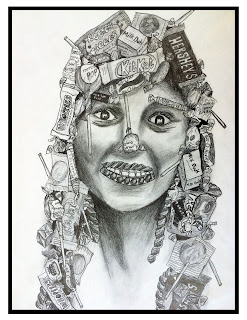Pieter at the Gallows in Mechelen, Piet Mondrian, 1896
Critically evaluate the work of art you selected
The work of art served its purpose. It prompted many thought and conversation, as planned. I felt that the VTS mood was effected by the colorless scheme as well as the subject matter.
Reflecting on Yenawine’s article on image selection, was it an appropriate choice for your students, considering their age, stage, interests, and abilities? Explain why or why not.
I feel that the image was appropriate base on my readings. Listening to the terms being used to describe the work of art, I was able to determine that the subject matter was age appropriate.
In what ways did it challenge them? Was the challenge too great, too little, just right?
As I predicted, I feel that the students were challenged because they were shown a less busy work of art. I feel as though they had to really dig deep in order to both describe and reflect on the material. I feel as though the challenge was neither too great, or too little. It was just right. I believe that this may come for more experience from VTSing, or from getting to know my students at the VTS level.
What features/aspects of the work of art and its narrative did the students notice? What intrigued them?
The students noticed all of the features that I predicted. There were also features that were noticed that I did not predict. Some examples were the crookedness in the tree, the texture of the illustration, one student even made reference to the sticks below and suggested that they may be prepared to burn the body afterwards. It was cool!
Were there any surprises?
I was surprised to get responses from students who normally do not speak up. It was as if they, too were being grabbed and pulled by the power of VTS!
Would you use this image again with a similar class of students? Explain.
I would definitely use this image again, as it brought on a sound conversation and wonderful links. I do believe that it would have to be shown at the right time, though. I feel that if this VTS were shown early, that it may have less effect, but if shown following a string of action photos or "happy jubilee" photos, then its effect will be sound. Also, i feel like a student should be comfortable with VTS prior to assessing an image such as this..

























